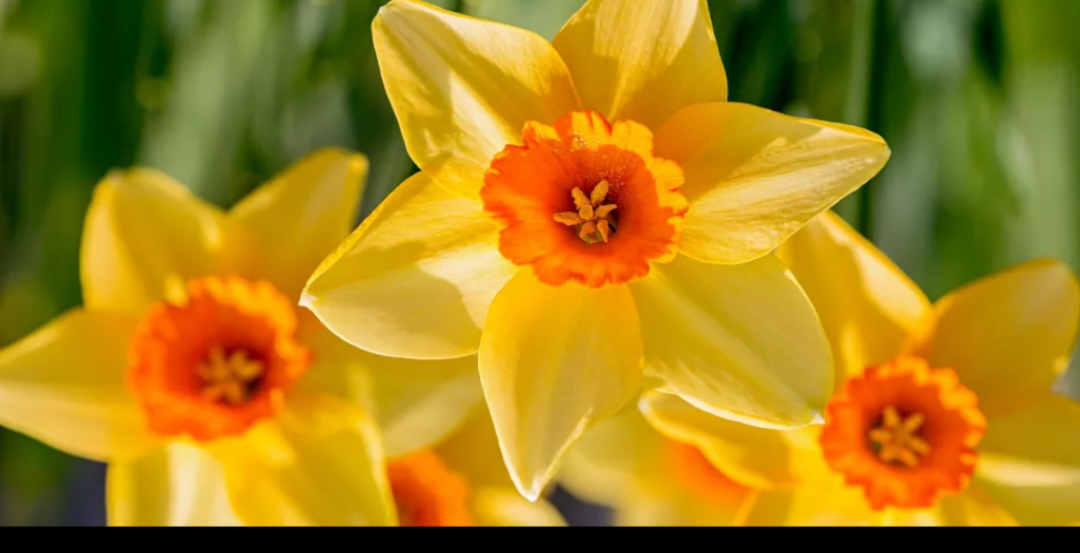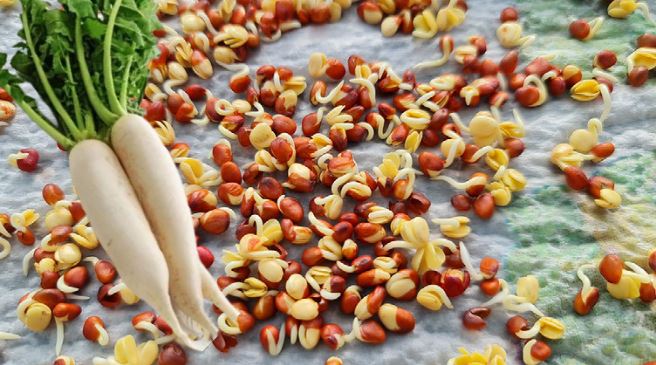Introduction:
Summer is the season when our gardens burst into life with a riot of colour and fragrance. It is also the time when we spend more time outside, enjoying the warm weather and the fruits of our labor. However, gardening in the summer can be a challenge, especially in the UK, where the weather is unpredictable. In this book, we will provide you with all the information you need to create a stunning garden that will thrive in the summer months.
Chapter 1: Planning your garden
The first step to creating a beautiful summer garden is to plan it properly. In this chapter, we will discuss the importance of site analysis, soil preparation, and selecting the right plants for your garden. We will also provide you with tips on how to create a garden design that works for you.
Chapter 2: Planting for summer
In this chapter, we will focus on the plants that thrive in the UK summer. We will discuss the different types of flowers, shrubs, and vegetables that you can grow, and provide you with tips on how to care for them. We will also cover topics such as watering, fertilizing, and pest control.
Chapter 3: Maintaining your garden
Once your garden is planted, it’s important to maintain it properly to ensure that it stays healthy and vibrant throughout the summer. In this chapter, we will discuss the essential maintenance tasks, such as pruning, deadheading, and mulching. We will also provide you with tips on how to deal with common problems, such as pests and diseases.
Chapter 4: Garden projects
Summer is a great time to take on some garden projects, such as building a garden pond, installing a patio, or creating a vegetable garden. In this chapter, we will provide you with step-by-step instructions on how to tackle these projects and create a garden that is both beautiful and functional.
Chapter 5: Garden accessories
In this chapter, we will discuss the different types of garden accessories that you can use to enhance the beauty and functionality of your garden. We will cover topics such as garden furniture, lighting, and water features, and provide you with tips on how to choose the right accessories for your garden.
Conclusion:
A beautiful summer garden is within your reach, even in the UK’s challenging climate. With the tips and techniques provided in this book, you can create a garden that is not only beautiful but also sustainable and resilient. Whether you’re a seasoned gardener or a beginner, this book will provide you with all the information you need to create a garden that will be the envy of your neighbors. Happy gardening!
Chapter 1: Planning your garden
A successful summer garden starts with careful planning. Whether you’re starting from scratch or revamping an existing garden, there are a few essential steps you need to follow to ensure that your garden thrives during the summer months.
1.1 Site analysis
The first step in planning your garden is to conduct a site analysis. This involves taking a close look at your garden’s physical characteristics, such as soil type, exposure to sunlight, and topography. You should also consider the microclimate of your garden, which can be influenced by nearby buildings, trees, and other landscape features.
By conducting a site analysis, you can identify the strengths and weaknesses of your garden and make informed decisions about the types of plants that will thrive in your particular environment.
1.2 Soil preparation
The quality of your soil is crucial to the success of your garden. Before planting anything, you need to prepare the soil properly. This may involve testing the soil pH, adding organic matter to improve soil structure, and incorporating fertilizers and other soil amendments.
The type of soil in your garden will determine the best approach to soil preparation. For example, if you have heavy clay soil, you may need to add sand or grit to improve drainage. If you have sandy soil, you may need to add organic matter to improve water retention.
1.3 Plant selection
Once you have analyzed your garden site and prepared the soil, you can start thinking about the plants you want to grow. In the UK, there are many types of plants that thrive during the summer, including annuals, perennials, bulbs, shrubs, and vegetables.
When selecting plants for your garden, it’s important to consider factors such as the amount of sunlight your garden receives, the soil type, and the amount of maintenance the plants require. You should also consider the size of the plants, their growth habits, and their blooming periods.
1.4 Garden design
After you’ve selected the plants you want to grow, you need to think about how to arrange them in your garden. A well-designed garden is not only aesthetically pleasing but also functional and easy to maintain.
When designing your garden, you should consider factors such as plant height, bloom time, and color scheme. You should also think about the placement of hardscape elements such as paths, patios, and walls. A good garden design should create a cohesive and harmonious look that reflects your personal style and enhances the natural beauty of your surroundings.
1.5 Conclusion
Proper planning is the key to a successful summer garden. By conducting a site analysis, preparing the soil, selecting the right plants, and designing your garden carefully, you can create a beautiful and functional outdoor space that you can enjoy all season long.
Chapter 2: Planting for summer
Now that you’ve planned your garden, it’s time to start planting. In this chapter, we will discuss the plants that thrive in the UK summer and provide you with tips on how to care for them.
2.1 Annuals
Annuals are plants that complete their life cycle in one growing season. They are popular in summer gardens because they provide a burst of color and are easy to grow. Some popular annuals for UK summer gardens include marigolds, petunias, zinnias, and cosmos.
When planting annuals, it’s important to choose plants that are well-suited to your garden’s soil and sun exposure. You should also make sure to plant them at the right time, typically in late spring or early summer. Annuals need regular watering and fertilizing to ensure healthy growth and abundant blooms.
2.2 Perennials
Perennials are plants that come back year after year. They are a great investment for summer gardens because they provide long-lasting color and require less maintenance than annuals. Some popular perennials for UK summer gardens include lavender, delphiniums, phlox, and echinacea.
When planting perennials, it’s important to choose plants that are well-suited to your garden’s soil and sun exposure. You should also consider the plant’s mature size and growth habit. Perennials need regular watering and fertilizing to ensure healthy growth and abundant blooms.
2.3 Bulbs
Bulbs are plants that grow from an underground storage organ. They are a great choice for summer gardens because they provide dramatic, showy blooms that last for weeks. Some popular bulbs for UK summer gardens include lilies, gladiolus, and dahlias.
When planting bulbs, it’s important to choose bulbs that are well-suited to your garden’s soil and sun exposure. You should also plant bulbs at the right depth and at the right time, typically in early spring or late fall. Bulbs need regular watering and fertilizing to ensure healthy growth and abundant blooms.
2.4 Shrubs
Shrubs are woody plants that provide structure and form in the garden. They are a great choice for UK summer gardens because they provide year-round interest and require less maintenance than annuals and perennials. Some popular shrubs for UK summer gardens include roses, hydrangeas, and butterfly bushes.
When planting shrubs, it’s important to choose plants that are well-suited to your garden’s soil and sun exposure. You should also consider the plant’s mature size and growth habit. Shrubs need regular watering and fertilizing to ensure healthy growth and abundant blooms.
2.5 Vegetables
Growing your own vegetables is a great way to enjoy fresh, healthy produce all summer long. Some popular vegetables for UK summer gardens include tomatoes, cucumbers, beans, and peas.
When planting vegetables, it’s important to choose varieties that are well-suited to your garden’s soil and sun exposure. You should also consider the plant’s mature size and growth habit. Vegetables need regular watering and fertilizing to ensure healthy growth and abundant yields.
2.6 Conclusion
Planting the right plants is essential for a successful summer garden. By selecting plants that are well-suited to your garden’s soil and sun exposure and providing them with proper care, you can create a beautiful and productive garden that will thrive all season long.
Chapter 3: Maintaining your garden
Now that you’ve planted your summer garden, it’s important to care for it properly to ensure healthy growth and abundant blooms. In this chapter, we will discuss the essential tasks for caring for your summer garden.
3.1 Watering
Watering is essential for the health of your plants. In the UK summer, plants need regular watering, especially during prolonged dry spells. Water your garden deeply and infrequently, rather than giving it frequent shallow waterings. This will encourage deeper root growth and help your plants withstand dry spells. Avoid watering in the middle of the day when the sun is at its hottest, as this can cause water to evaporate before it reaches the roots.
3.2 Mulching
Mulching is a great way to conserve moisture in your garden, suppress weeds, and improve soil health. Apply a layer of organic mulch, such as shredded leaves, grass clippings, or bark chips, around the base of your plants. This will help to keep the soil moist and cool, and prevent weeds from growing. Mulching also adds organic matter to the soil, which improves its fertility and structure.
3.3 Fertilizing
Fertilizing is important for providing your plants with the nutrients they need to grow and produce blooms. Apply a balanced fertilizer, such as a 10-10-10 or 20-20-20, once a month during the growing season. Be sure to follow the instructions on the fertilizer package, as over-fertilizing can damage your plants.
3.4 Deadheading
Deadheading is the process of removing spent blooms from your plants. This encourages new growth and prolongs the blooming period. Use a pair of sharp scissors or pruning shears to snip off the spent blooms just above a healthy leaf or bud. Deadheading is especially important for annuals and some perennials, such as roses and dahlias.
3.5 Pest and Disease Control
Pests and diseases can be a major problem in the summer garden. Keep an eye out for common pests such as aphids, slugs, and snails, and treat them promptly with an appropriate insecticide or organic remedy. Diseases such as powdery mildew and black spot can also be a problem, especially in humid conditions. Remove any infected plant material promptly and consider using a fungicide if the problem persists.
3.6 Conclusion
Caring for your summer garden is essential for ensuring healthy growth and abundant blooms. By watering, mulching, fertilizing, deadheading, and controlling pests and diseases, you can create a beautiful and productive garden that will thrive all season long. Remember to stay vigilant and address any problems promptly to keep your garden healthy and happy.
Chapter 4: Garden projects
Choosing the right plants for your summer garden can make all the difference in creating a beautiful and thriving outdoor space. In this chapter, we will explore some of the best plants for a summer garden in the UK.
4.1 Annuals
Annuals are plants that complete their life cycle in one growing season. They are great for adding quick and reliable colour to your garden. Some of the best annuals for a UK summer garden include:
Marigolds: These bright and cheery flowers come in a range of colours and are great for attracting pollinators to your garden.
Petunias: With their trumpet-shaped blooms and wide range of colours, petunias are a popular choice for summer gardens.
Cosmos: These delicate flowers come in shades of pink, white, and purple and are great for adding height to your garden.
Zinnias: These colourful flowers come in a range of shapes and sizes, from small pom-poms to large dahlia-like blooms.
4.2 Perennials
Perennials are plants that live for more than one growing season. They are great for creating a lasting and low-maintenance garden. Some of the best perennials for a UK summer garden include:
Lavender: This fragrant herb is great for attracting bees and butterflies to your garden, and its grey-green foliage makes it a beautiful addition to any landscape.
Echinacea: Also known as coneflowers, echinaceas come in a range of colours and are great for adding height to your garden. They are also popular for their medicinal properties.
Salvia: These hardy plants come in a range of colours and are great for attracting pollinators to your garden. They are also drought-tolerant, making them a good choice for a hot and dry summer.
Phlox: These fragrant flowers come in a range of colours and are great for adding a splash of colour to your garden.
4.3 Shrubs and Trees
Shrubs and trees are great for adding structure and height to your garden. Some of the best shrubs and trees for a UK summer garden include:
Hydrangeas: These popular shrubs come in a range of colours and are great for adding a splash of colour to your garden. They also thrive in the shade, making them a good choice for a north-facing garden.
Roses: With their fragrant blooms and thorny stems, roses are a classic choice for a summer garden. They come in a wide range of colours and sizes.
Magnolias: These beautiful trees are known for their large, fragrant blooms and are great for adding height and drama to your garden.
4.4 Conclusion
Choosing the right plants for your summer garden can be a fun and rewarding process. By selecting a mix of annuals, perennials, shrubs, and trees, you can create a diverse and beautiful garden that will thrive all season long. Be sure to consider factors such as light, soil, and water requirements when selecting your plants, and don’t be afraid to experiment with new varieties and combinations. With a little bit of planning and care, you can create a summer garden that will bring joy and beauty to your outdoor space.
Chapter 5: Garden accessories
In addition to selecting the right plants for your summer garden in the UK, adding the right accessories can help to enhance the beauty and functionality of your outdoor space. In this chapter, we will explore some popular garden accessories that can help take your summer garden to the next level.
5.1 Garden Furniture
Garden furniture is essential for creating a comfortable and inviting outdoor space. From loungers to dining sets, there are a wide variety of options available to suit every taste and budget. When selecting garden furniture, consider the size of your space, the style of your home, and your intended use. Some popular garden furniture options include:
Bistro sets: These small, intimate sets are perfect for enjoying a morning coffee or a romantic dinner for two.
Dining sets: If you enjoy hosting outdoor dinner parties, a larger dining set with chairs and a table is a must-have.
Loungers: Perfect for relaxing with a good book or taking a nap in the sun, loungers come in a variety of styles and materials.
5.2 Decorative Accents
Decorative accents can add personality and style to your summer garden. From bird feeders to statues, there are a wide variety of options available to suit every taste and budget. Some popular decorative accents include:
Bird feeders and houses: These charming additions can attract a variety of feathered friends to your garden and provide them with a safe haven.
Garden statues: Whether you prefer classic or modern designs, garden statues can add a touch of elegance and interest to your outdoor space.
Wind chimes: These soothing and musical accents can create a peaceful and relaxing atmosphere in your garden.
5.3 Lighting
Adding lighting to your garden can help to extend your outdoor enjoyment into the evening hours. There are a variety of lighting options available to suit every need and style. Some popular garden lighting options include:
String lights: These charming lights can be strung across your patio or garden to create a warm and inviting atmosphere.
Solar lights: These environmentally-friendly lights use solar power to charge during the day and illuminate your garden at night.
Spotlights: If you want to highlight a particular feature or plant in your garden, spotlights can provide a dramatic effect.
5.4 Conclusion
Adding the right accessories can help to enhance the beauty and functionality of your summer garden. When selecting garden furniture, decorative accents, and lighting, be sure to consider your space, style, and intended use. With a little bit of planning and creativity, you can create an outdoor space that is both beautiful and functional, and that will bring joy and relaxation all season long.
Like this:
Like Loading...






